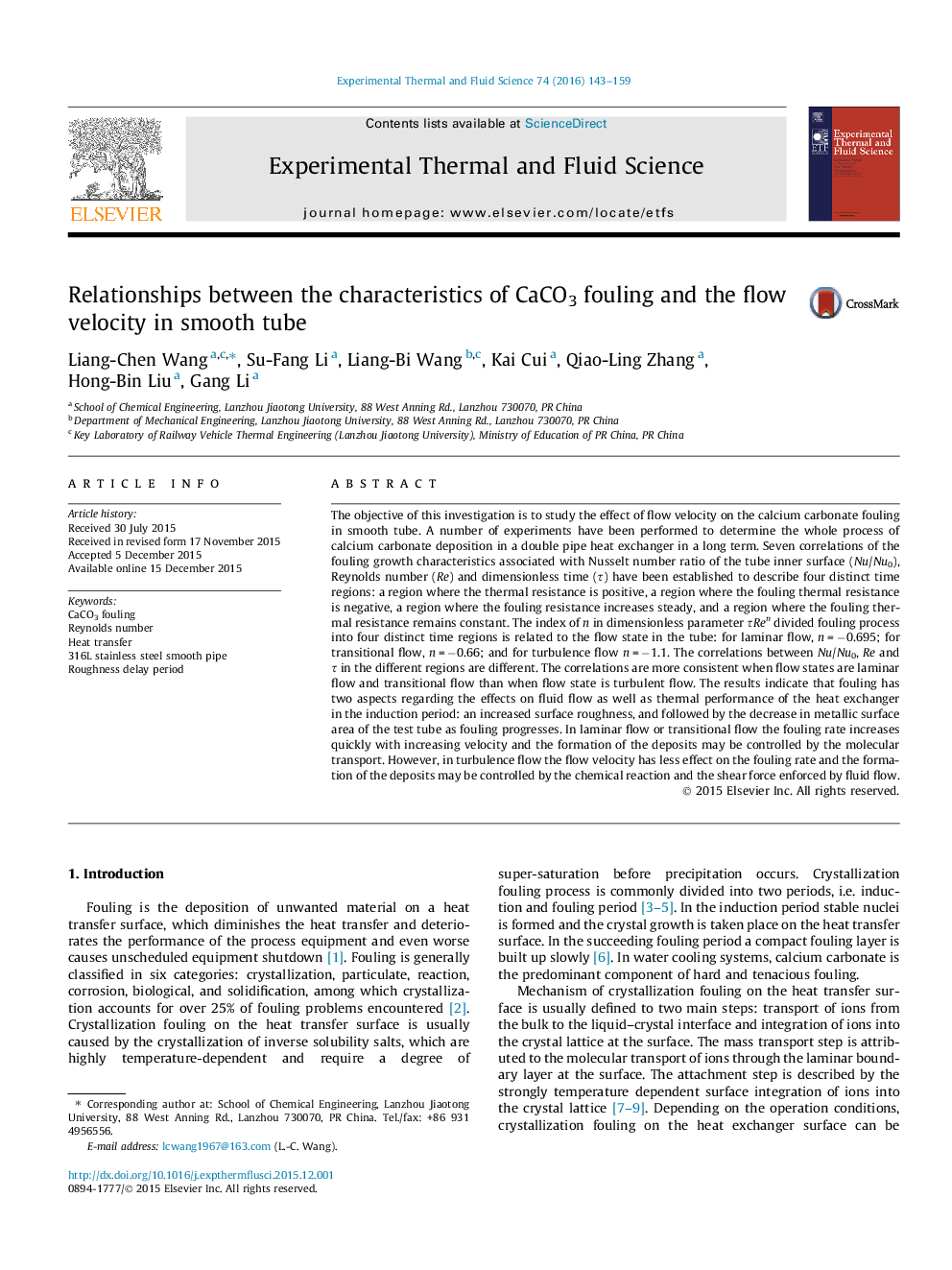| کد مقاله | کد نشریه | سال انتشار | مقاله انگلیسی | نسخه تمام متن |
|---|---|---|---|---|
| 651193 | 1457402 | 2016 | 17 صفحه PDF | دانلود رایگان |

• We study the effects of flow velocity on CaCO3 fouling in smooth tube.
• Fouling growth characteristic relies on Nu/Nu0, Re and dimensionless time.
• The index of n in dimensionless parameter τRen is related to the flow state in tube.
• Surface roughness and uncovered metallic surface area determine fouling regions.
The objective of this investigation is to study the effect of flow velocity on the calcium carbonate fouling in smooth tube. A number of experiments have been performed to determine the whole process of calcium carbonate deposition in a double pipe heat exchanger in a long term. Seven correlations of the fouling growth characteristics associated with Nusselt number ratio of the tube inner surface (Nu/Nu0), Reynolds number (Re) and dimensionless time (τ) have been established to describe four distinct time regions: a region where the thermal resistance is positive, a region where the fouling thermal resistance is negative, a region where the fouling resistance increases steady, and a region where the fouling thermal resistance remains constant. The index of n in dimensionless parameter τRen divided fouling process into four distinct time regions is related to the flow state in the tube: for laminar flow, n = −0.695; for transitional flow, n = −0.66; and for turbulence flow n = −1.1. The correlations between Nu/Nu0, Re and τ in the different regions are different. The correlations are more consistent when flow states are laminar flow and transitional flow than when flow state is turbulent flow. The results indicate that fouling has two aspects regarding the effects on fluid flow as well as thermal performance of the heat exchanger in the induction period: an increased surface roughness, and followed by the decrease in metallic surface area of the test tube as fouling progresses. In laminar flow or transitional flow the fouling rate increases quickly with increasing velocity and the formation of the deposits may be controlled by the molecular transport. However, in turbulence flow the flow velocity has less effect on the fouling rate and the formation of the deposits may be controlled by the chemical reaction and the shear force enforced by fluid flow.
Journal: Experimental Thermal and Fluid Science - Volume 74, June 2016, Pages 143–159